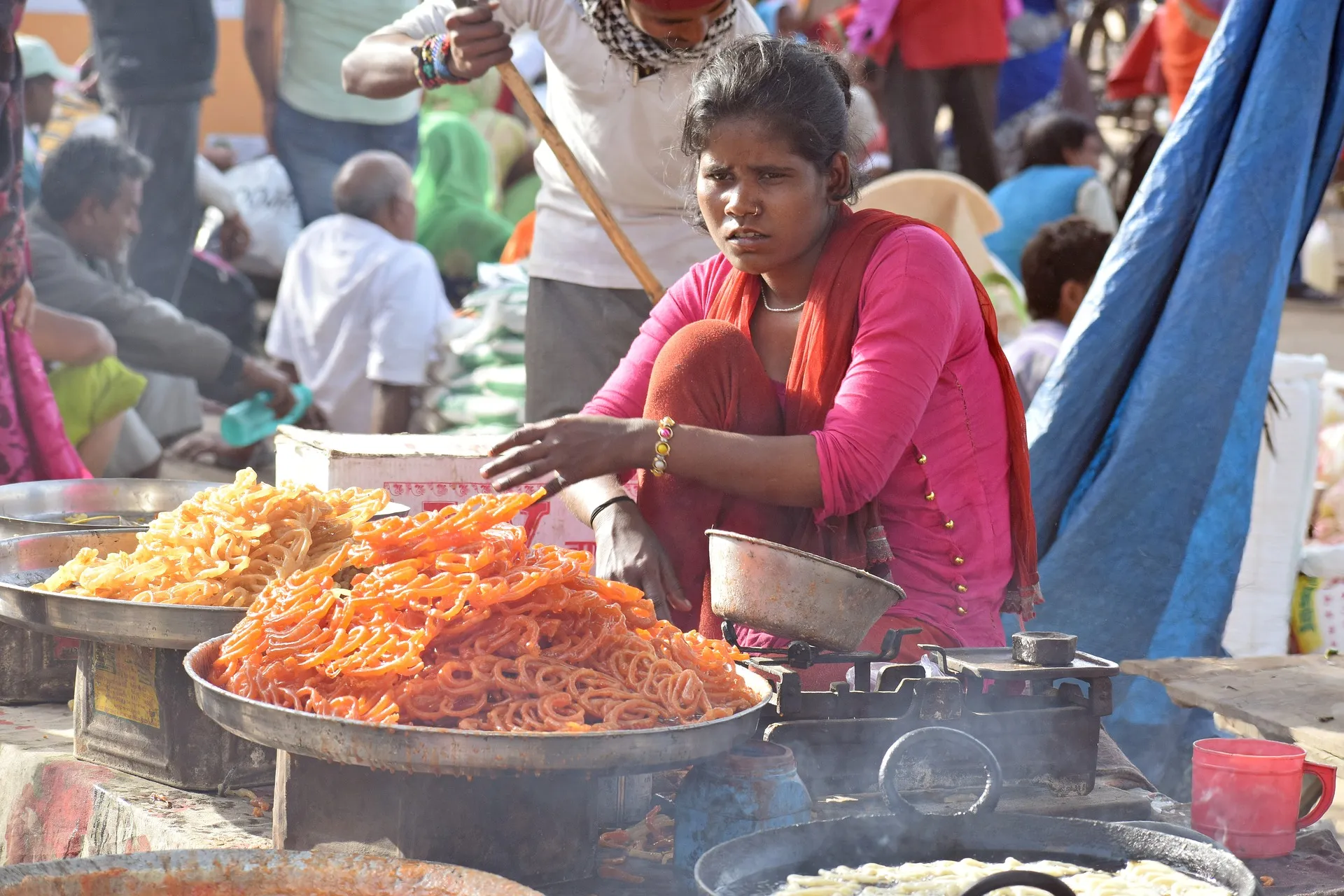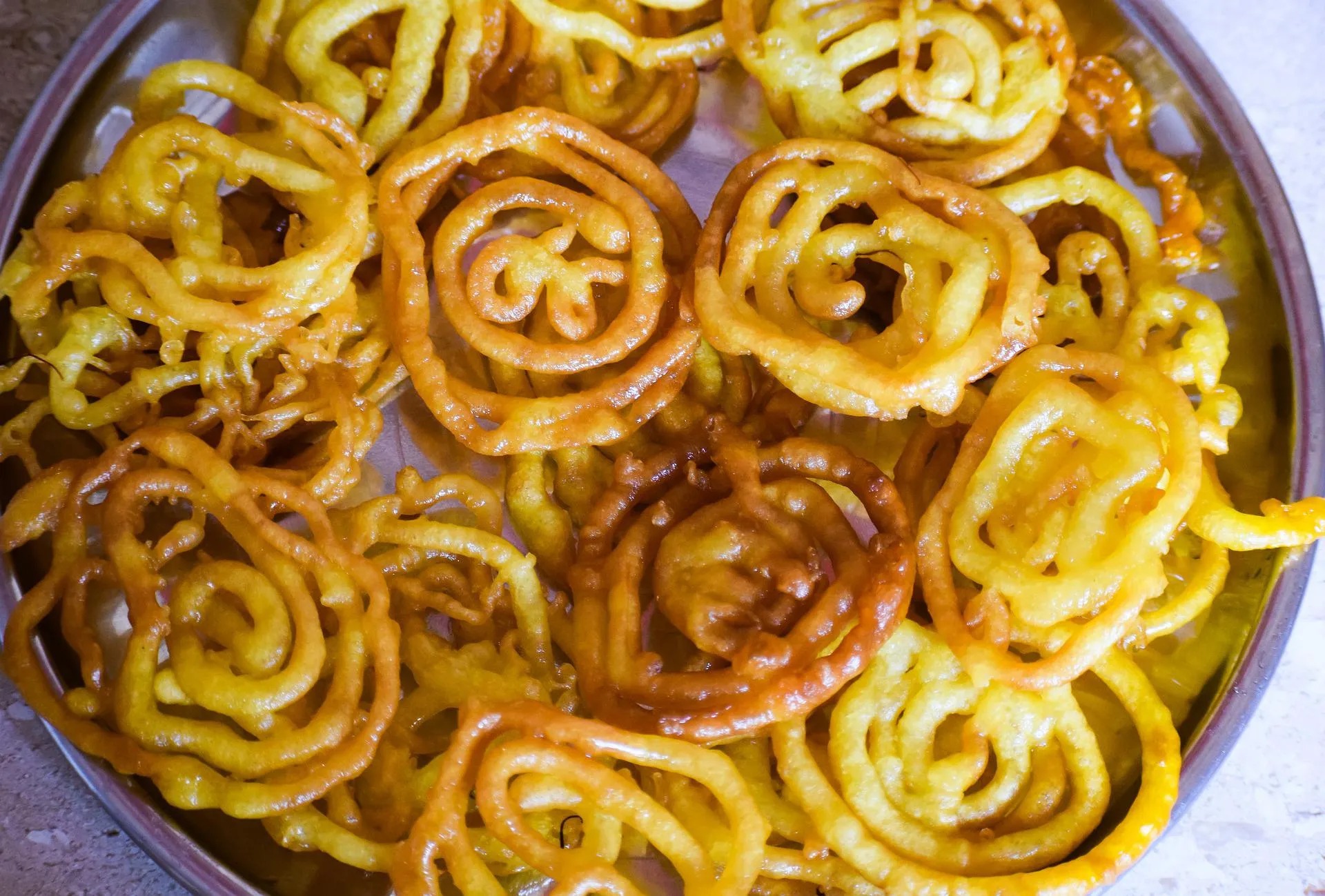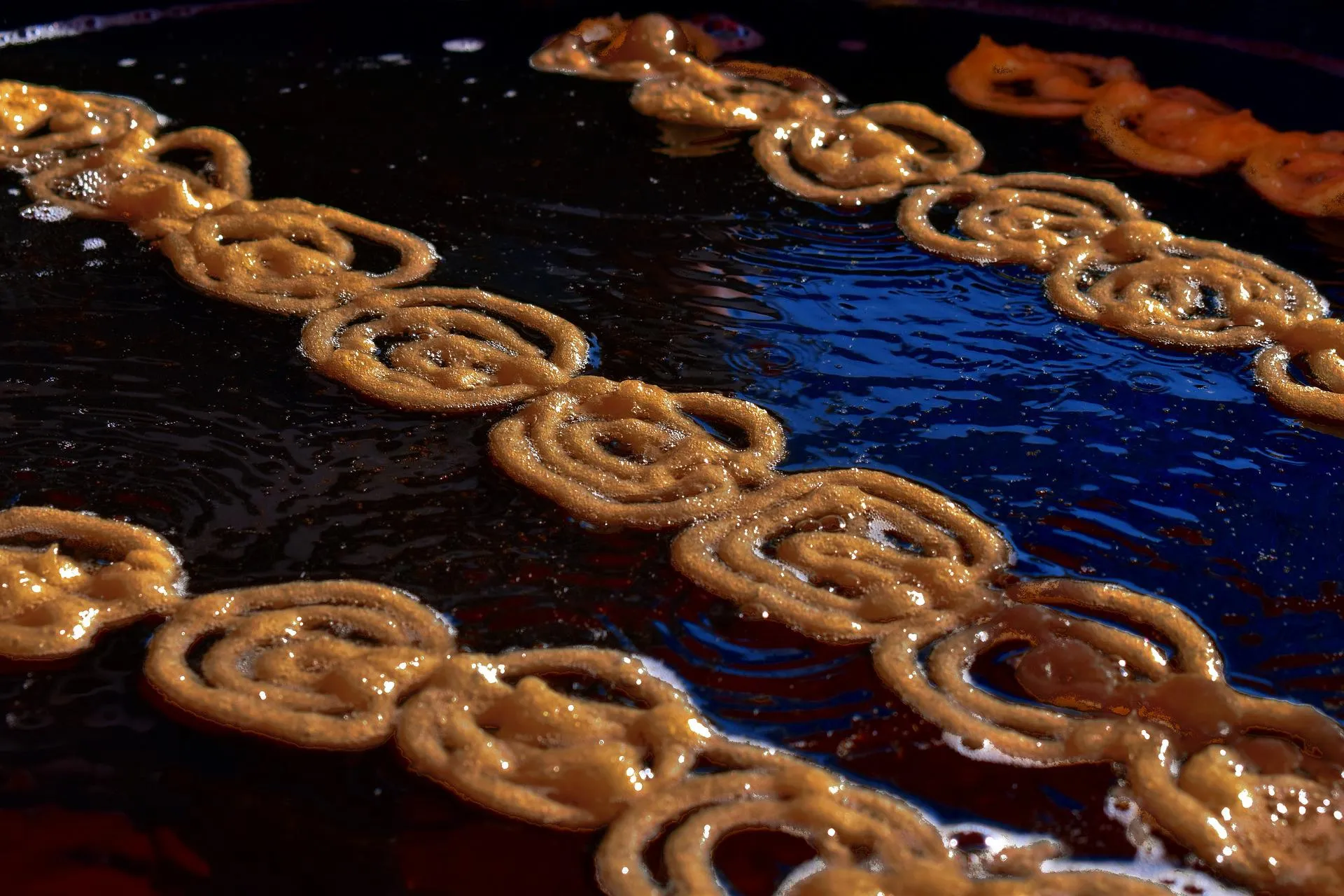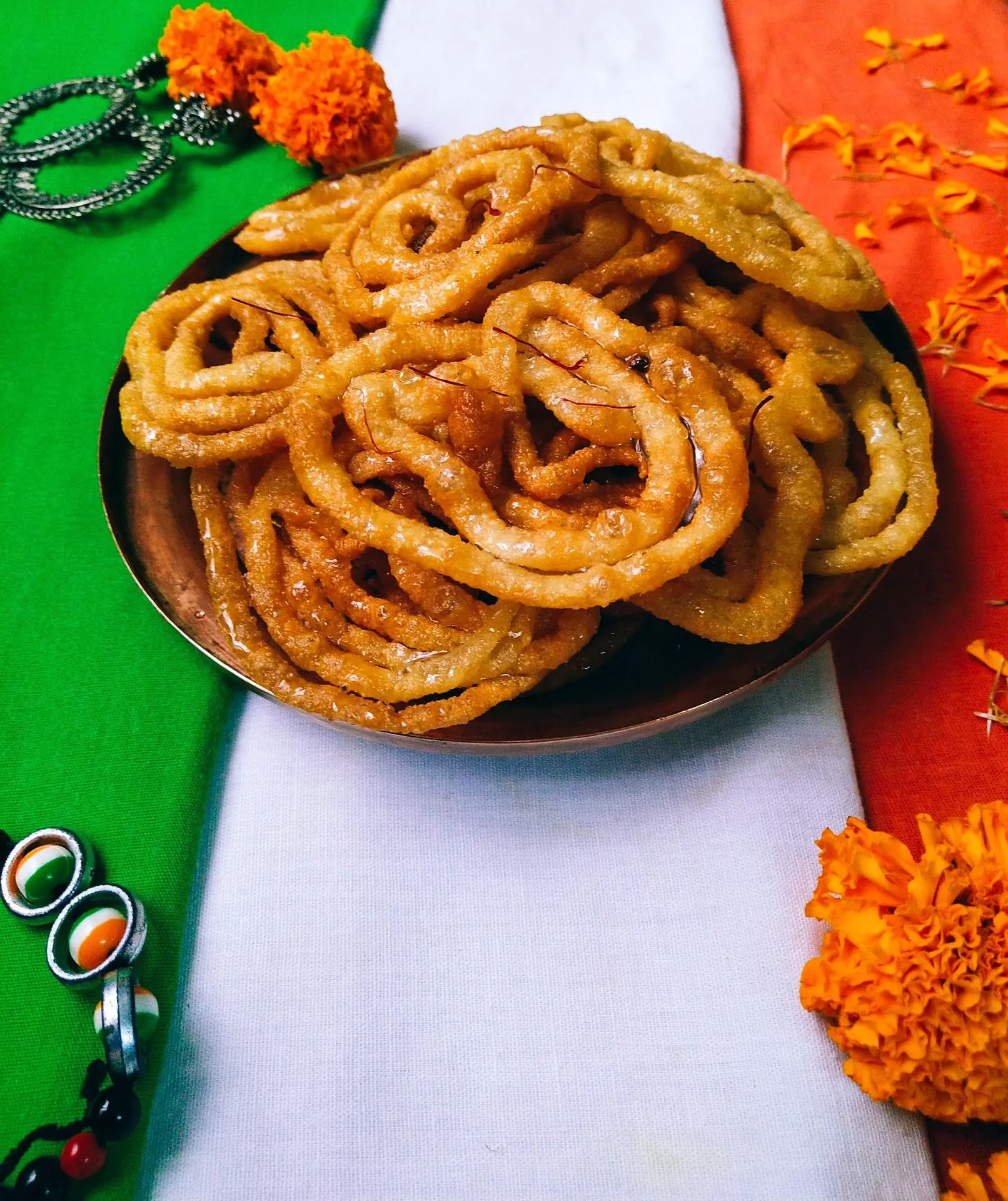Some sweets evoke so many memories. When it comes to food memories, Jalebi ranks right up there. When I was a kid, our Sunday breakfast consisted of jalebi with milk or rabri. My father enjoys thin and crispy jalebis, and there was a little sweet shop in the small town where we lived at the time, and every Sunday, dad would go there at 8 a.m. and bring back hot and delicious jalebis for all of us. Those were the best jalebis I’d ever eaten.

Jalebi is still a popular breakfast dish in North India. It’s funny because jalebi is a sweet, but people frequently eat it for breakfast on weekends or at festivals. Of course, it’s a sweet, so it’s eaten as a dessert, but many people also enjoy it for breakfast.
With Diwali approaching, I wanted to share a traditional homemade jalebi recipe with you. This recipe yields thin and crispy jalebis, which my father and I enjoy. Jalebi can be made in a variety of ways, the most popular of which is the instant version, which does not require fermentation. But, in my opinion, nothing beats jalebi made the traditional way. Jablebis gets its sourness from fermentation, which is typical of this Indian sweet. I’ve made instant jalebis before, and the traditional ones are unquestionably my favourite!

Jalebi is a spiral-shaped traditional Indian sweet made primarily of flour mixed with a small amount of chickpea flour and yoghurt (even though adding yoghurt is not absolutely essential). The batter ferments before being deep-fried and dipped in sugar syrup. People frequently mix up two Indian sweets: jalebi and imarti. They appear to be similar but are quite different. Imarti, the less common of the two, is made from lentils. Jalebi can be found everywhere! As I previously stated, this recipe produces thin and crispy jalebis, which I prefer. Use a wider tip for thicker jalebi – I just used a squeeze bottle with a small tip.
So, here’s what you should keep in mind when making homemade jalebi.
- Batter consistency: It should be flowing but not overly thin or thick. If the batter disperses in the oil as you pipe it, it’s possible that it’s too thin and needs to be thickened with flour. If you can’t pipe it, add a little water at a time, 1/2-1 teaspoon at a time, and then check to see if you’ve reached the desired consistency.
- Oil temperature: When piping the jalebi batter, make sure the oil is at a low temperature. Too high and the batter will be drenched in oil as you attempt to form the jalebi shape.
So, when you pipe the batter into hot oil, keep the temperature low. Once piped, increase the heat and fry until crisp.
Jalebi is frequently served with rabri (thickened milk), and the combination is simply delicious! It also goes well with milk. Yes, please serve me hot homemade jalebi with milk for breakfast! We hope you enjoy this special treat! These jalebis will stay crispy for hours, so make them ahead of time.

Method
Combine the flour (maida), chickpea flour (besan), baking powder, and baking soda in a large mixing bowl.
Mix in the yoghurt and cardamom powder.
Add food colouring (if using) and water to make a batter with a flowing consistency.
The batter should be neither be too thick nor too thin. Depending on the quality of the maida and besan, you may need up to 3/4 cup of water.
Cover the batter and leave it to ferment for 10-12 hours. Because I live in a cold climate, mine took 24 hours. Once the batter has fermented, you will notice small bubbles on top.
In the morning, lightly whisk the batter. If the batter appears too thick at this point, add a small amount of water [about 1 tablespoon].
Meanwhile, heat the sugar in a saucepan.
Bring the water and sugar to a boil, then remove from the heat. When it reaches a boil, add the cardamom powder, saffron strand, and lemon juice.
Allow to simmer until the syrup becomes sticky and forms a one string consistency (see image below – basically, place a drop of syrup between your thumb and index finger and move your fingers away from each other to form a single thread). Make it sticky if you can’t get consistency. While making the jalebis, keep the syrup warm.
Fill a squeeze bottle halfway with jalebi batter. The one I used had a very small tip, which resulted in the thin jalebis. Meanwhile, in a pan or kadai, heat the oil or ghee. I used a hybrid of the two. Reduce the heat to medium-low.
Squeeze the batter into the hot oil in a spiral motion from inside to outside. Keep the heat low or you won’t be able to form the shape. If the batter is dispersing in the oil, it may be too thin and needs to be thickened with flour. Increase the heat to medium-high after you’ve formed the spiral shape with the batter.
Fry until both sides are crisp. Remove from the oil and immediately dip into the warm sugar syrup, a few seconds on each side is sufficient.
Transfer the jalebis from the sugar syrup to a serving plate. With milk or rabri, serve homemade jalebi. You can top up with nuts if you want!

Note:
The prep time includes at least 12 hours of fermentation time, possibly more depending on how cold it is where you live. As previously stated, I allowed my batter to ferment for 24 hours.
